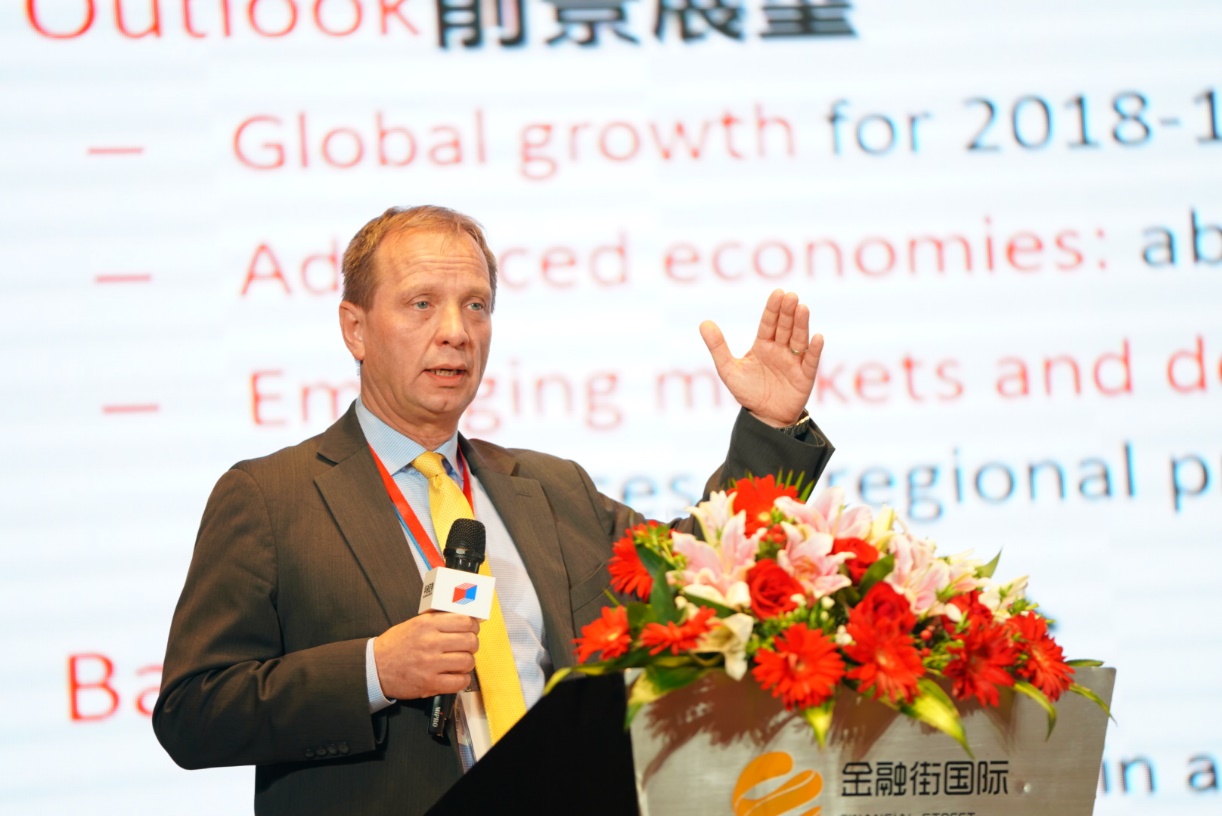
By Dai Qi
The International Monetary Fund (IMF) released its autumn version of the 2018 World Economic Outlook in China on Thursday.
Alfred Schipke, IMF's senior resident representative for China, said at the launch ceremony that global trade had slowed in the first half of 2018 after a rapid growth last year.

Alfred Schipke, IMF's senior resident representative for China, at the launch ceremony.
"Regarding the recent developments, higher oil prices have lifted headline inflation. Financial conditions have tightened for some emerging markets, but remain broadly accommodative," said Schipke.
IMF predicted that the global growth for 2018-19 is projected to remain steady at the 2017 level and would be moderate after that.
"Advanced economies are expected to see above-trend growth in the near term, but decline during the medium term. Emerging markets and developing economies will see a stable growth into the medium term for the group, but will be different for regional prospects," said Schipke.
According to the autumn version of 2018 World Economic Outlook, the global growth is projected to be 3.7 percent for 2018-19, a 0.2 percentage point lower for both years than the forecast in April.
At the same time, several of the downside risks highlighted in the April 2018 WEO --such as rising trade barriers and a reversal of capital flows to emerging market economies with weaker external positions, such as Argentina and Turkey -- have become more pronounced or have partially materialized.
"Escalating trade tensions and the potential shift away from a multilateral, rules-based trading system are key threats to the global outlook," noted the report.
IMF's World Economic Outlook is published twice a year in spring and autumn respectively.
The launch ceremony was jointly held by the IMF's Resident Representative Office in China, the International Monetary Institute of Renmin University of China and Hua Chuang Securities in Beijing.
